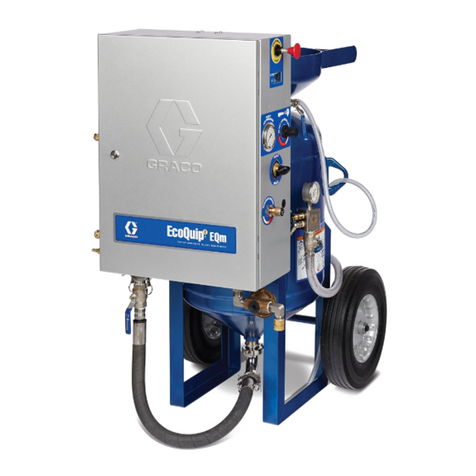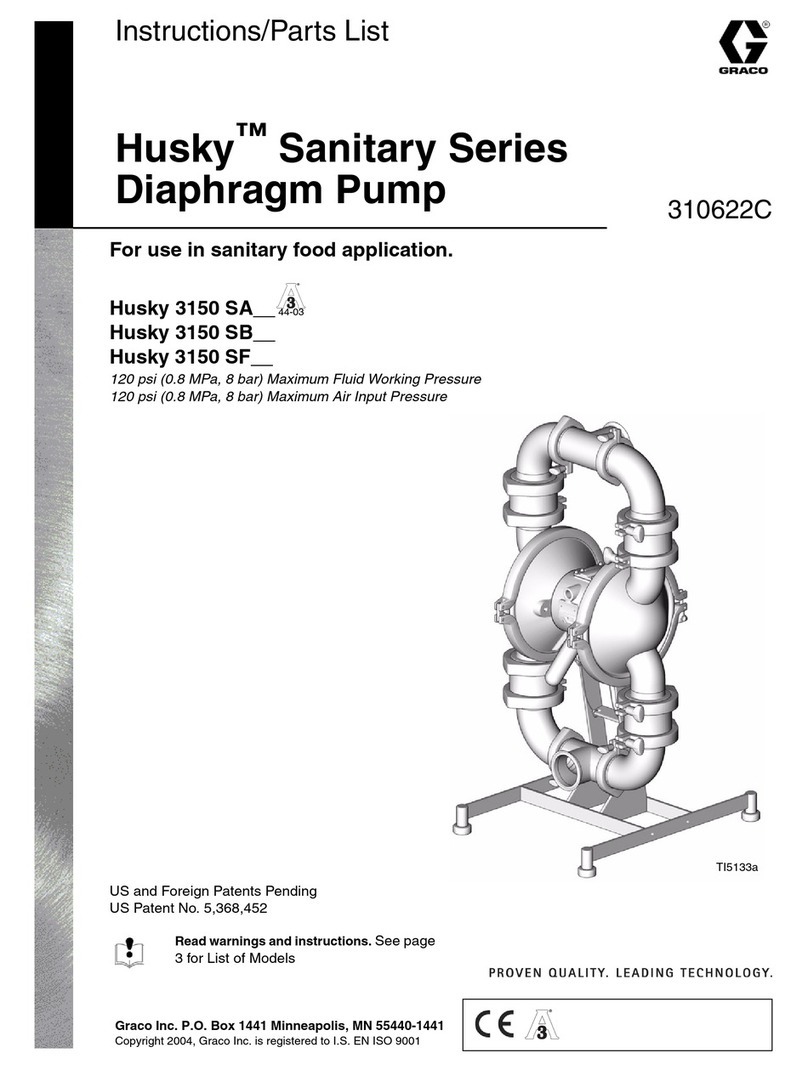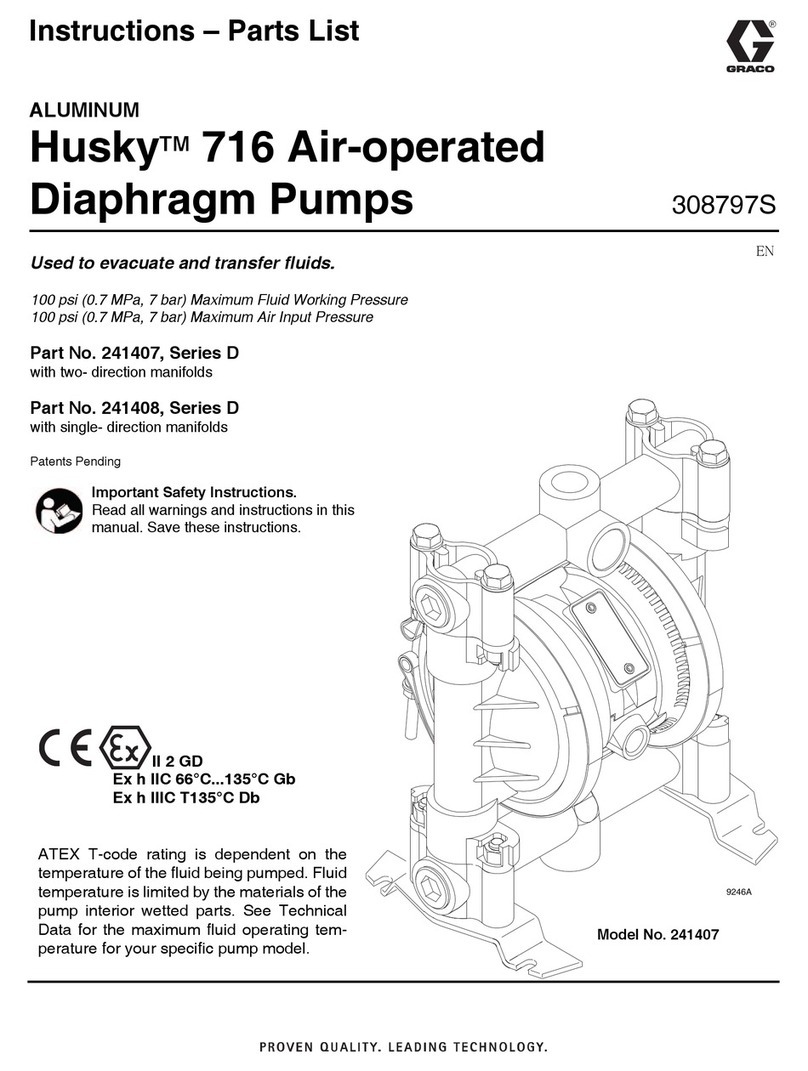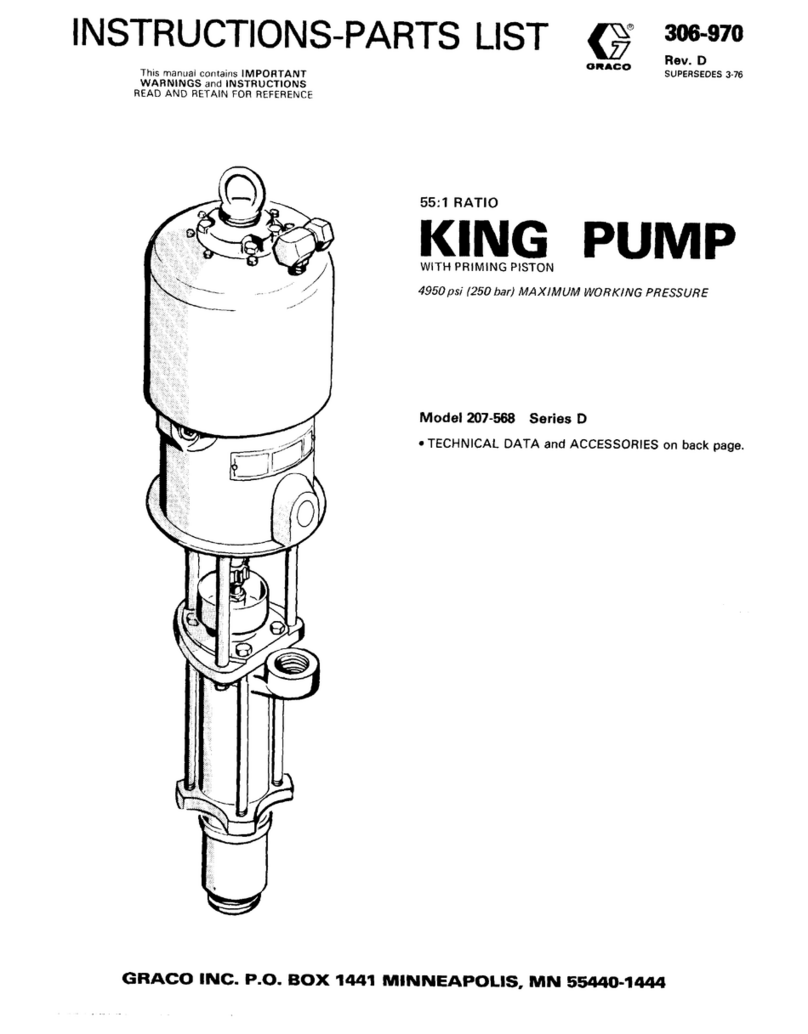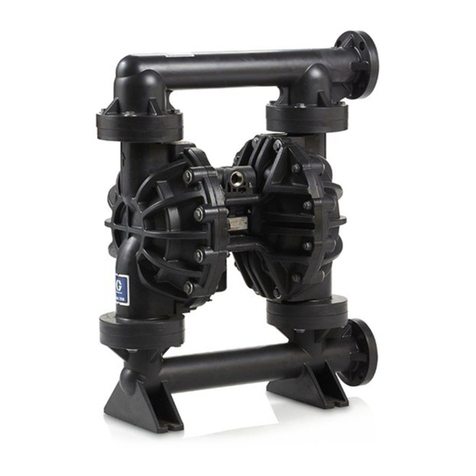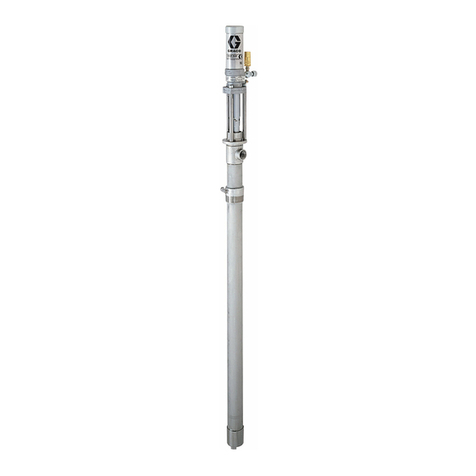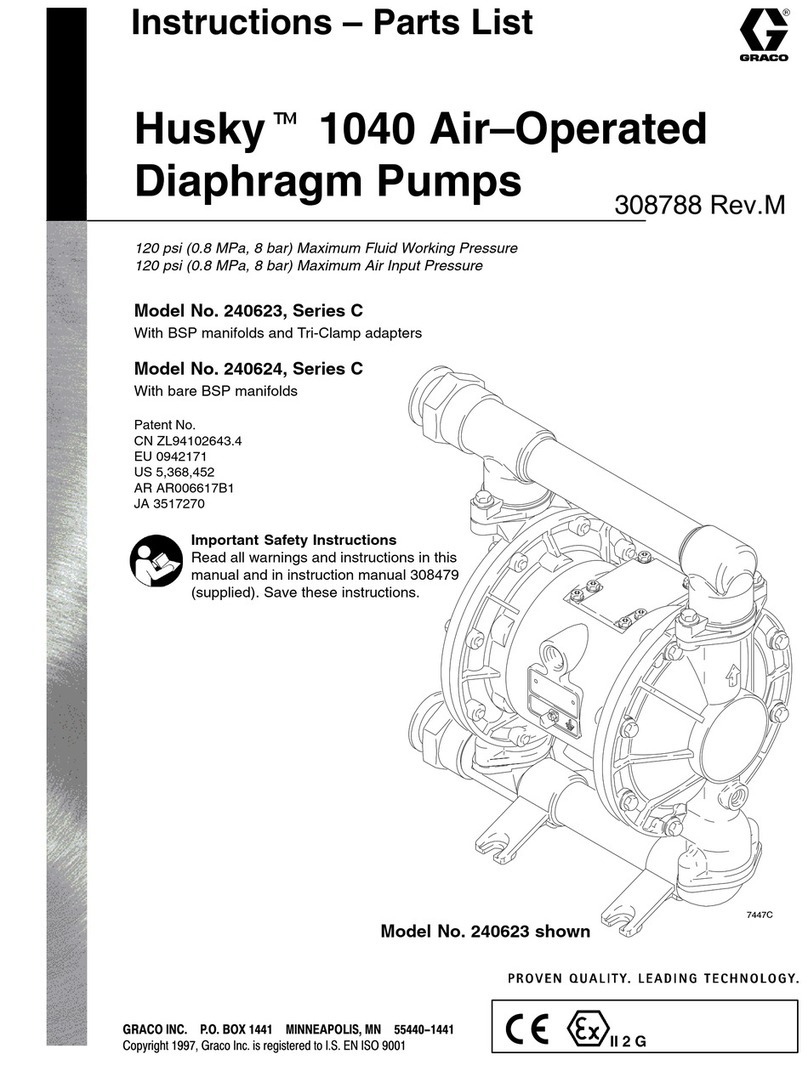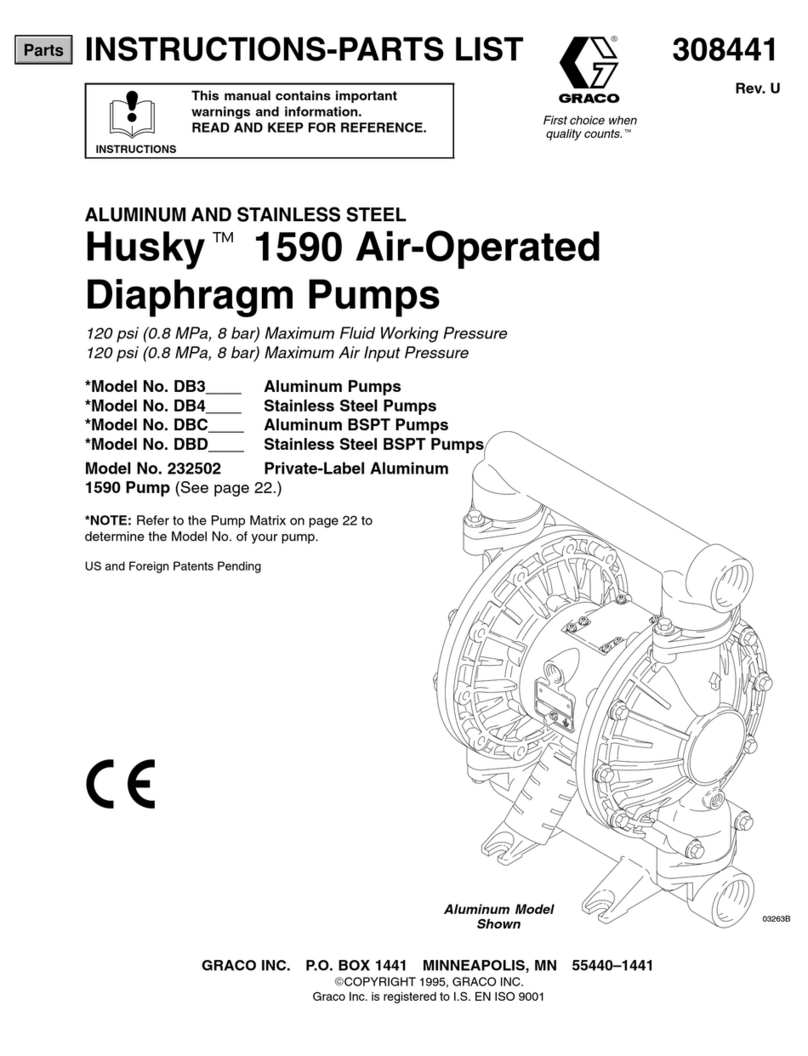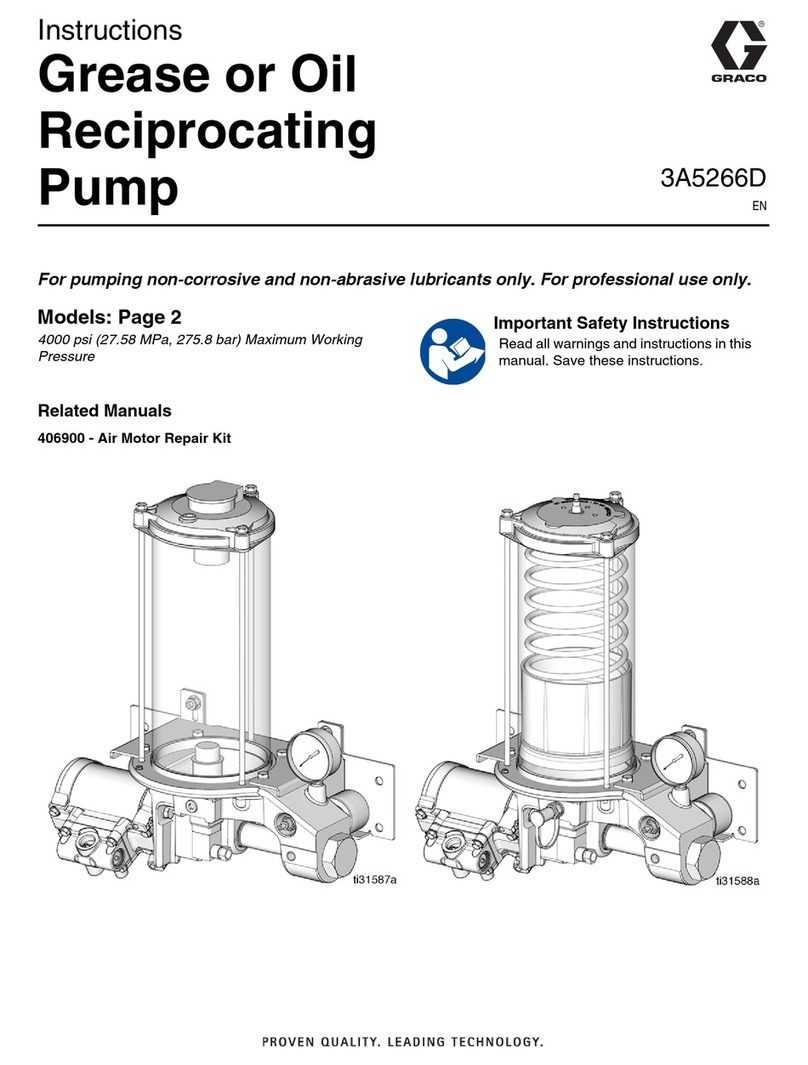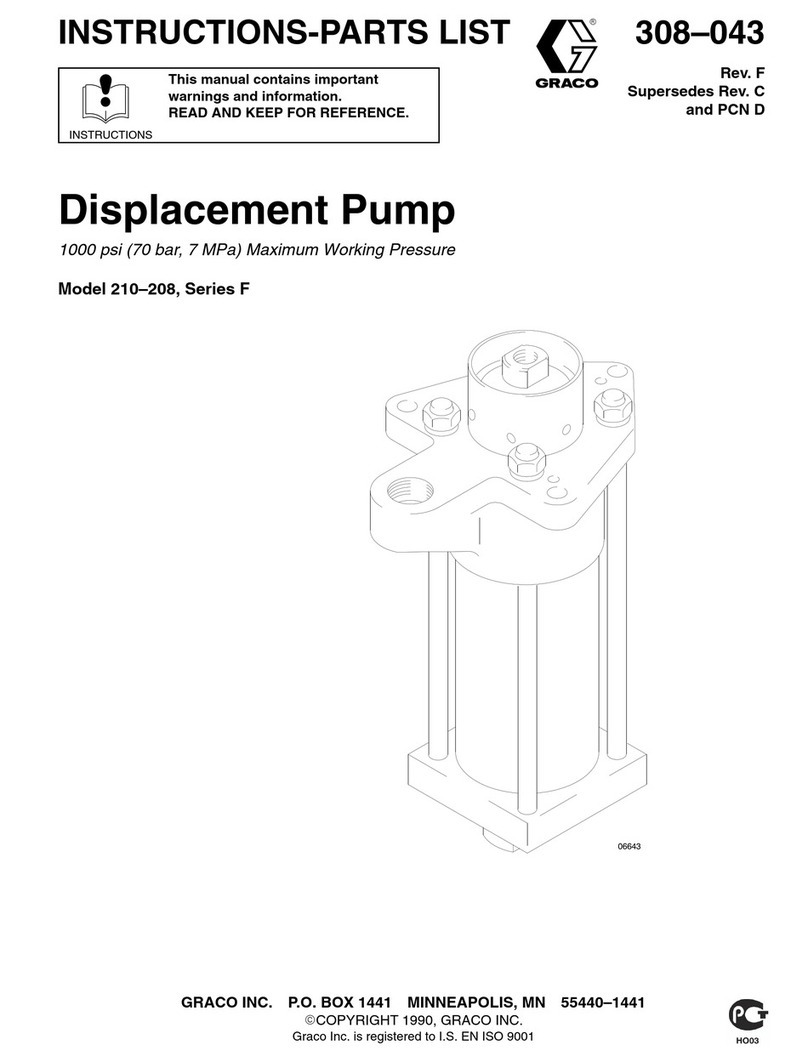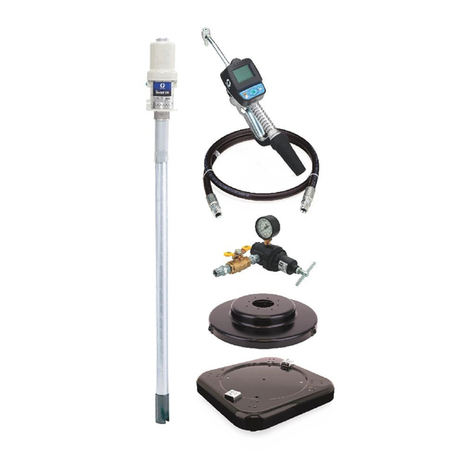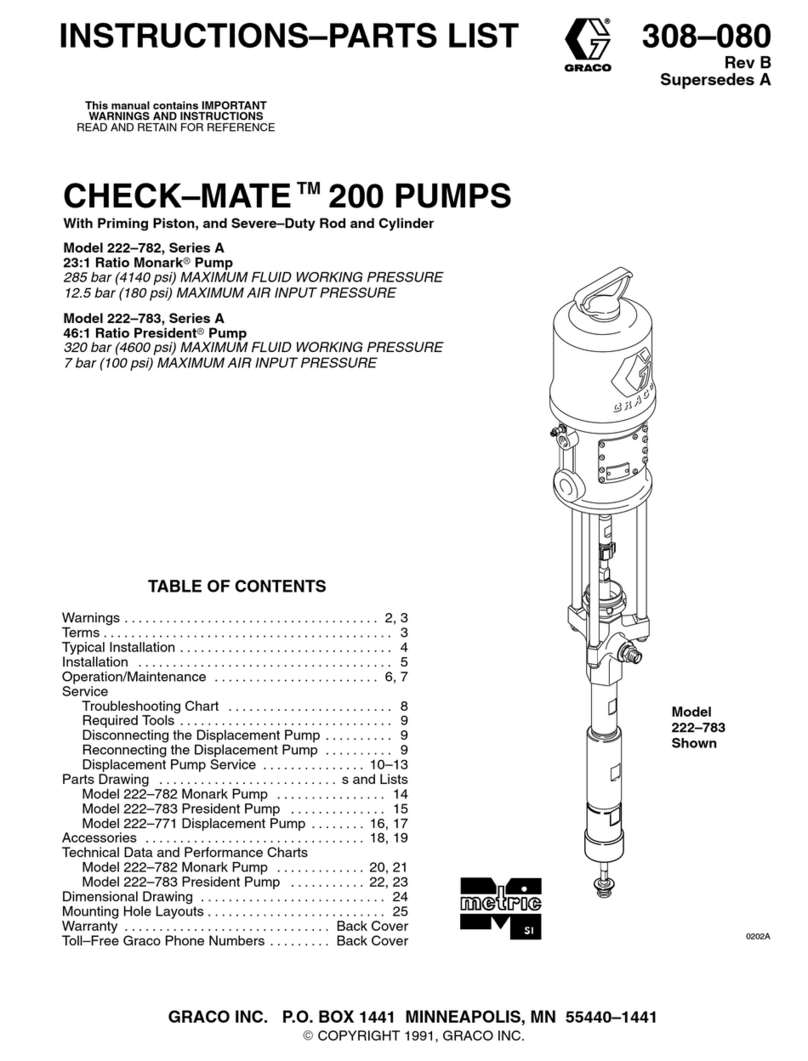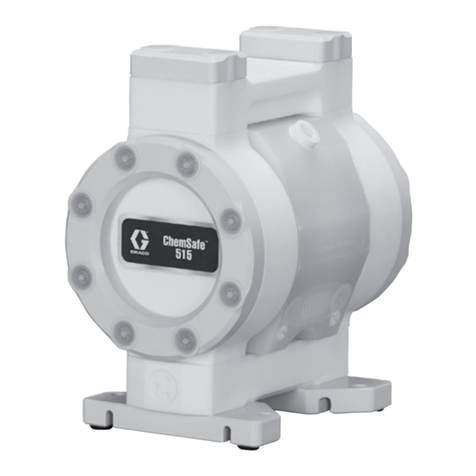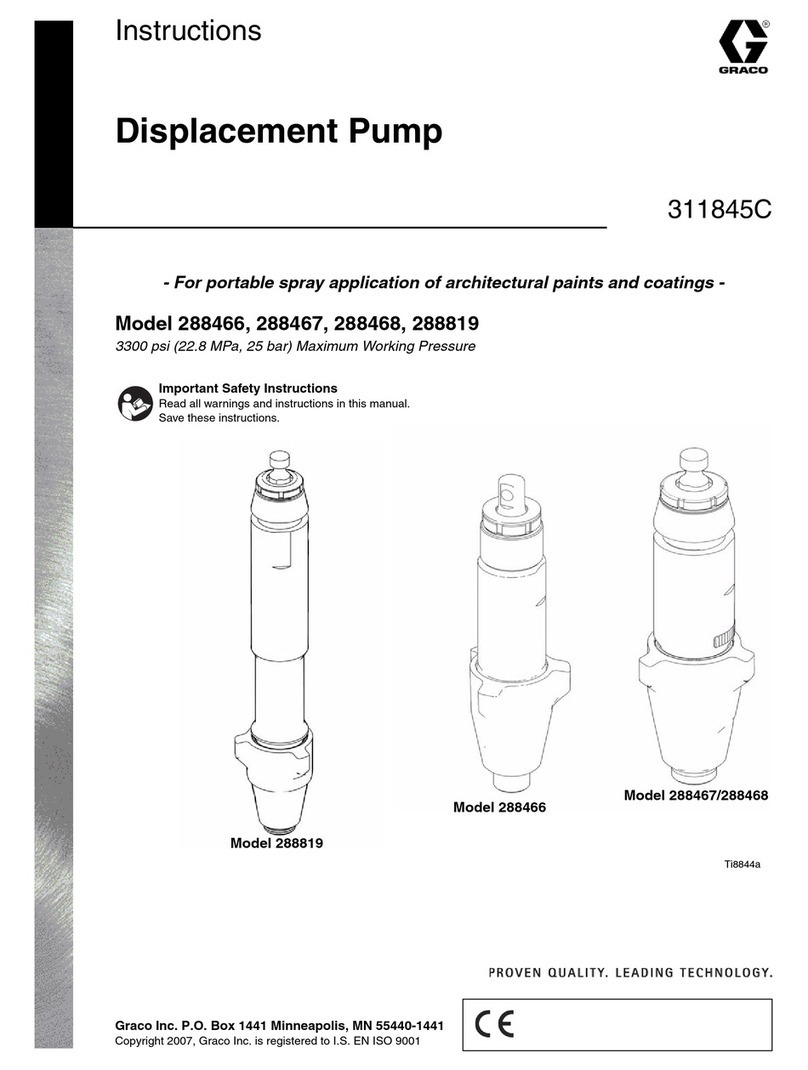
FIRE
OR
EXPLOSION HAZARD
Static electrlcity is created by the high velocity flow of fluid
through the pump and hose. If every part of the
sprayldispensing equipment is not properly grounded, spark
-
ing
may occur, and the system may become hazardous.
Sparking may also occur when plugging in or unplugging a
power supply cord. Sparks can ignite fumes from solvents and
the fluid being sprayedldispensed, dust particles and other
flammable substances, whether you are sprayingldispensing
indoors or outdoors, and can cause
a
fire or explosion and
serious bodily injury and property damage.
Do
not plug in or
unplug any power supply cords
in
the sprayldispensing area
when there is any chance of igniting fumes still in the air.
while using this equipment, STOP SPRAYING IMMEDIATE-
If you experience any static sparking or even
a
slight shock
LY. Check the entire system for positive grounding.
Do
not
use the system again until the problem has been identified
and
corrected.
Grounding
To reduce the risk of static sparking, around the pump and all
other equipment used or located
inihespray/dispensing area.
structions for your area and type of equipment. BE SURE to
CHECK your local electrical code for detailed grounding
in-
ground
all
of this equipment:
1.
Pump:
use a ground wire and clamp as shown
in
Fig 1.
2.
Air and
fluid
hoses: use only grounded hoses with a max
-
imum of 150 m 1500 feet1 combined hose length to ensure
grounding continuity. Refer
to
Hose Grounding
Con
-
tinuity.
3. Air compressor: follow the air compressor manufacturer's
recommendations.
4.
Spray gun/dispensing valve: obtain grounding through
connection to a properly grounded fluid hose and pump.
5.
Object being sprayed: according to local code.
6. All solvent pails used when flushing, according
to
local
code. Use only metalpails, which are conductive.
Do
not
or cardboard, which interrupts the grounding continuity.
place the pail on a non
-
conductive surface, such as paper
7.
To
maintain grounding continuity when flushing
or
reliev
-
ing
pressure, always hold a metal part of the gunldis
-
pensing valve firmly to the side of a grounded metal pail,
then trigger the gunldispensing valve.
and washer
(0).
Insert one end of
a
1.5 mm I12 gal minimum
To
ground the
pump,
loosen the groundirp lug locknut IA)
ground wire ID1 into the
slot
in
lug
IC) and tighten the locknut
securely. See Fig 1. Connect the other end of the wire to a
true earth ground. See ACCESSORIES on page 17 to order a
ground wire and clamp.
Before
flushing,
be sure the entire system and flushing pails
Flushing Safety
are properly grounded. Refer to Grounding. above. Follow
spray tip/nozzle from the gunldispensing valve. Always use
the Pressure Relief Procedure on page
2,
and remove the
the lowest possible
fluid
pressure, and maintain firm metal-to-
during flushing to reduce the risk of injection injury, static
metal contact between the gunldispensing valve and the pail
sparking and splashing.
HOSE
SAFETY
hose develops a leak, split or rupture due to any kind of wear,
High pressure fluid
in
the hoses can be very dangerous. If the HANDLE AND ROUTE HOSES CAREFULLY. Do not pull on
hoses to move equipment.
Do
not use fluids which are not
damage or misuse, the high pressure spray emitted from
it
can compatible with the inner tube and cover of the hose.
DO
NOT
pew damage.
cause an injection injury or other serious bodily injury
or
pro
-
'
expose Graco hoses
to
temperatures above 82OC (180°FI or
ALL FLUID HOSES
MUST
HAVE SPRING GUARDS1 The
,
Hose
Grounding
Continuity
spring guards help protect the hose from kinks or bends at or Proper hose grounding continuity is essential
to
maintaining a
close
to
the coupling which can result in hose rupture. grounded spray system. Check the electrical resistance of your
air and fluid hoses
at
least once a week. If your hose does
not
TIGHTEN all fluid connections securely before each use. High have a tag on
it
which specifies the maximum electrical
pressure fluid can dislodge a loose coupling or allow high resistance, contact the hose supplier or manufacturer for the
pressure spray to be emitted from the coupling. maximum resistance limits. Use a resistance meter in the ap-
NEVER use a damaged hose. Before each use, check the en
-
~ resistance exceeds the recommended limits, replace
it
im-
propriate range for your hose to check the resistance. If the
tire hose for cuts, leaks, abrasion, bulging cover. or damage or mediately. An ungrounded or poorly grounded hose can make
movement of the hose couplings. If any of these conditions . your system hazardous. Also, read
FIRE
OR
EXPLOSION
exist, ieplace the hose immediately.
DO
NOT try to recouple HAZARD, above.
high pressure hose or mend
it
with tape or any other device. A
repaired hose cannot contain the high pressure fluid.
below
-40°C
(-4OOF).
MOVING PARTS HAZARD
Moving parts can pinch or amputate your fingers or other
body parts. When the pump
is
operating, the p!iming piston
fingers and hands away from the priming piston.
(located at the pump intake) and the air motor plston (located Before attempting to clear an obstruction from the priming pis-
behind the air motor plates) move. Therefore, NEVER operate ton or service the pump, follow the Pressure Relief
Proce-
the pump
with
the air motor plates removed, and keep your
dum
on
page
2
to
prevent the
pump
from starting accidentally.
IMPORTANT
United States Government safety standards have been adopted under the Occupational Safety and Health Act. These standards-par-
ticularly the General Standards, Part 1910, and the Construction Standards, Part 1926
-
should be consulted.
307-605
3
.. .
,.
.
:
..:
,,
. .
..
..
.
..
. ..

